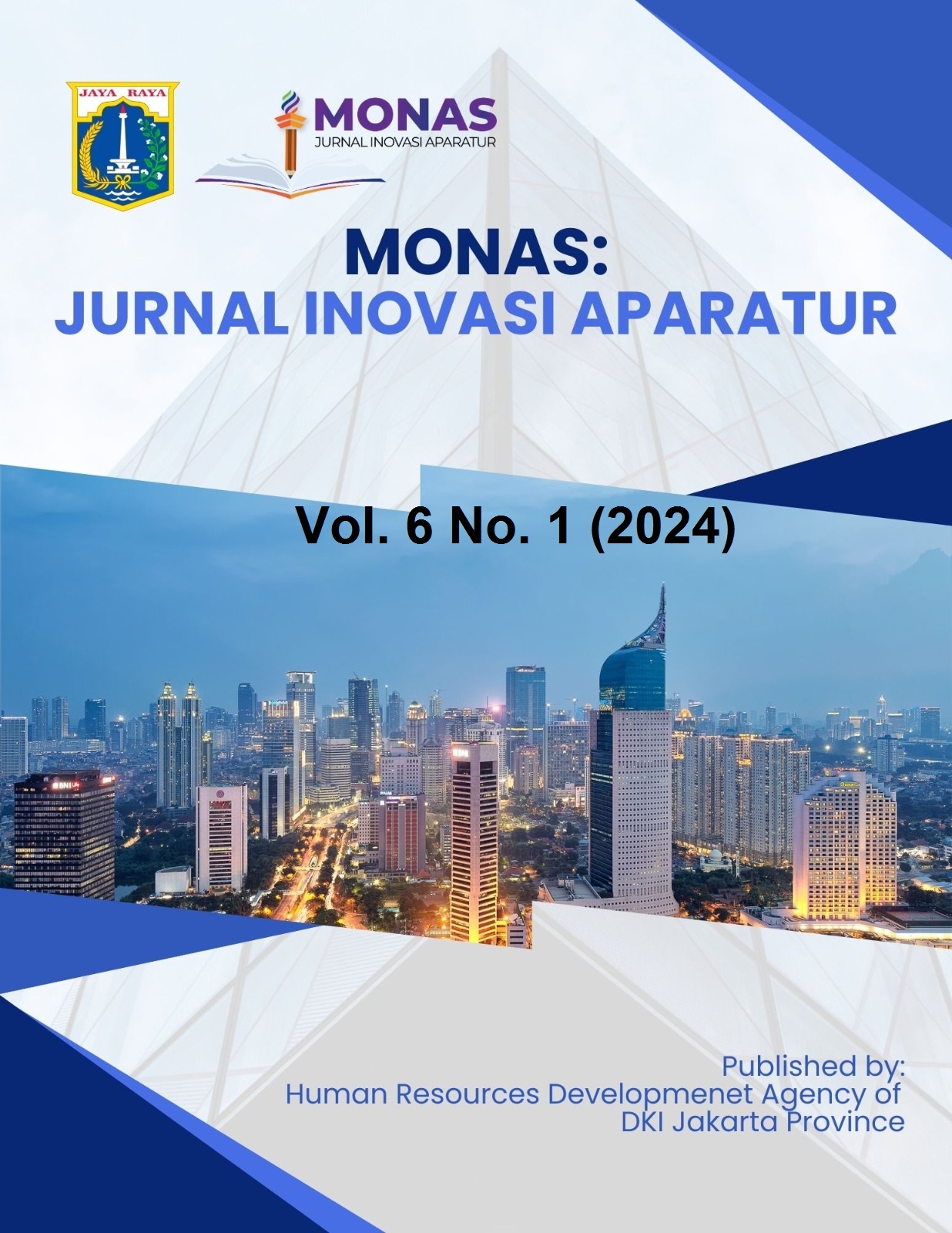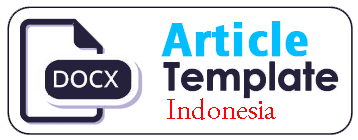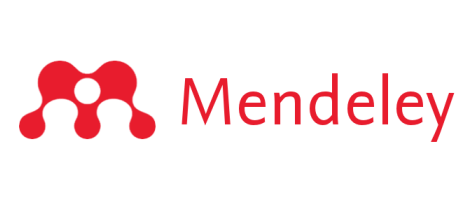The Role of Stakeholders in Enhancing the Public Service Agency's and Area Management's Performance Information Adequacy
DOI:
https://doi.org/10.54849/monas.v6i1.192Keywords:
Performance Information, Feasibility of Performance Information, Public Service AgencyAbstract
In addition to understanding the process for PNBP BLU income targets in the context of various BLU characteristics, the study intends to assess the role of stakeholders in the formulation of the performance of Public Service Agencies (BLU) involved in area management. This study focuses on the role of agents and principals in BLU performance decision making, as well as addressing problems connected to the application of input cost standards (SBM) and operational cost details in budgeting, in an effort to improve the efficiency and quality of BLU services. The findings of this study have the potential to significantly enhance BLU management in the field of area management and raise the standard of community services. This kind of research is exploratory and qualitative, concentrating on how performance is defined in relation to the budget. The research data were gathered from two sources: 1) interviews with six stakeholders who represented principals and 23 resource persons who served as agents for four BLUs; and 2) planning-budgeting materials that served as guidelines for BLU policy (including its rules). The study was carried out in 2022, from March to September. Based on the involvement of stakeholders, the study's findings identified two traits of BLU organizations within regional management clusters: 1) BLU exclusively as Satker; 2) BLU as a ministry in addition to Satker. Performance information is more explicitly formulated by BLU stakeholders, ministries, and Satker than by BLU alone. The more important BLU must take into account when planning and budgeting, the less focused and obviously linked the BLU service performance of regional management clusters is in the planning and budgeting documents.
References
Ang, J. S., Cole, R. A., & Lin, J. W. (2000). Agency costs and ownership structure. Journal of Finance, 55(1), 81–106. https://doi.org/10.1111/0022-1082.00201
Belotto, M. J. (2018). Data analysis methods for qualitative research: Managing the challenges of coding, interrater reliability, and thematic analysis. Qualitative Report, 23(11). https://doi.org/10.46743/2160-3715/2018.3492
Chen, Y., Yin, Y., Browne, G. J., & Li, D. (2019). Adoption of building information modeling in Chinese construction industry: The technology-organization-environment framework. Engineering, Construction and Architectural Management, 26(9). https://doi.org/10.1108/ECAM-11-2017-0246
Dwi Antoro, S., & Sutiono, S. (2023). CASE STUDY IN FINANCE EDUCATION AND TRAINING AGENCY. Jurnal Inovasi Aparatur, 5(1). https://ejournal-bpsdm.jakarta.go.id/index.php/monas/article/view/122/59
Heinrich, C. J. (2012). How credible is the evidence, and does it matter? An analysis of the program assessment rating tool. Public Administration Review, 72(1). https://doi.org/10.1111/j.1540-6210.2011.02490.x
Hoque, Z., & Mia, L. (2019). Logic model and performance measurement: the role of logical framework analysis in performance-based budgeting. Journal of Public Budgeting, Accounting & Financial Management, 31(3), 426–446.
Indrawati, N. (2010). Penyusunan Anggaran dalam Era New Public Management: Implementasinya di Indonesia. Jurnal Riset Akuntansi Dan Bisnis, 10(September).
Junge, S. Y. (2022). Administrative Groupings and Equality in Public Service Provision. Journal of Public Administration Research and Theory, 32(2). https://doi.org/10.1093/jopart/muab031
Malterud, K. (2012). Systematic text condensation: A strategy for qualitative analysis. Scandinavian Journal of Public Health, 40(8). https://doi.org/10.1177/1403494812465030
Mau, T. A. (2021). Branding the public service of Canada: A model worthy of emulation or unfulfilled promise? In Public Branding and Marketing: A Global Viewpoint. https://doi.org/10.1007/978-3-030-70505-3_8
Mauro, S. G., Cinquini, L., & Sinervo, L. M. (2019). Actors’ dynamics toward performance-based budgeting: a mix of change and stability? Journal of Public Budgeting, Accounting and Financial Management, 31(2). https://doi.org/10.1108/JPBAFM-07-2018-0068
Morse, J. M. (2015). Critical Analysis of Strategies for Determining Rigor in Qualitative Inquiry. Qualitative Health Research, 25(9). https://doi.org/10.1177/1049732315588501
Nalewaik, A. (2013). Factors affecting capital program performance audit findings. International Journal of Managing Projects in Business, 6(3). https://doi.org/10.1108/IJMPB-11-2012-0070
Nugroho, F. A., & Salim, F. (2021). Analisis strategi pengembangan usaha BLU pusat pengelolaan komplek Kemayoran. Jurnal Matemar, 3(1), 50–62. https://e-jurnal.amanjaya.ac.id/index.php/matemar/article/view/114
PANDA, B., & LEEPSA, N. M. (2017). Agency Theory: Review of Theory and Evidence on Problems and Perspectives. Indian Journal of Corporate Governance, 10(1), 74–95.
Peek, S. T. M., Luijkx, K. G., Rijnaard, M. D., Nieboer, M. E., Van Der Voort, C. S., Aarts, S., Van Hoof, J., Vrijhoef, H. J. M., & Wouters, E. J. M. (2016). Older Adults’ Reasons for Using Technology while Aging in Place. Gerontology, 62(2). https://doi.org/10.1159/000430949
Rahman, A., Bulkis, S., & Mukhtar, M. (2016). Efektivitas Program Bantuan Ternak Sapi Pemerintah Di Kabupaten Gorontalo. J. Sains & Teknologi, 16(2).
Rimawati, A. (2017). Proses manajemen perencanaan dan penganggaran untuk peningkatan kualitas pelayanan publik. JURNAL REVITALISASI Jurnal Ilmu Manajemen, 6(4), 1–10.
Rose, J., Persson, J. S., Heeager, L. T., & Irani, Z. (2015). Managing e-Government: Value positions and relationships. Information Systems Journal, 25(5). https://doi.org/10.1111/isj.12052
Shidarta, & Van Huis, S. C. (2020). Between Revenues and Public Service Delivery SOEs and PSAs in Indonesia. Bijdragen Tot de Taal-, Land- En Volkenkunde, 176(2–3). https://doi.org/10.1163/22134379-bja10006
Silitonga, D. (2019). Komparasi perencanaan strategis (Renstra) Kemendikbud dan SMA Negeri 68 Jakarta. Jurnal Manajemen Bisnis, 22(2), 141.
Speklé, R. F., & Verbeeten, F. H. M. (2014). The use of performance measurement systems in the public sector: Effects on performance. Management Accounting Research, 25(2). https://doi.org/10.1016/j.mar.2013.07.004
Vitolla, F., Raimo, N., & Rubino, M. (2020). Board characteristics and integrated reporting quality: an agency theory perspective. Corporate Social Responsibility and Environmental Management, 27(2). https://doi.org/10.1002/csr.1879
Wahyudi, A., & Lantara, I. W. N. (2015). Analisis pengelolaan dan kinerja keuangan pada Pusat Pengelolaan Komplek Gelora Bung Karno (PPKGBK) dan Pusat Pengelolaan Komplek Kemayoran (PPKK) sebelum dan setelah penerapan prinsip pengelolaan keuangan Badan Layanan Umum (BLU) [Universitas Gajah Mada]. https://etd.repository.ugm.ac.id/penelitian/detail/83697#filepdf
Downloads
Published
Issue
Section
License
Authors who publish in this journal agree to the following terms:
- Authors retain copyright and grant the journal right of first publication with the work simultaneously licensed under a Creative Commons Attribution-NonCommercial-ShareAlike 4.0 International License that allows others to share the work with an acknowledgement of the work's authorship and initial publication in this journal.
- The journal allows the authors to hold the copyright without restrictions and to retain publishing rights without restrictions.
- Authors can enter into separate, additional contractual arrangements for the non-exclusive distribution of the journal's published version of the work (e.g., post it to an institutional repository or publish it in a book), with an acknowledgement of its initial publication in this journal.








